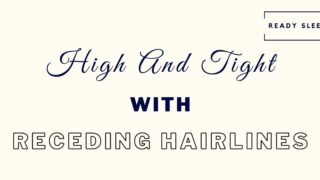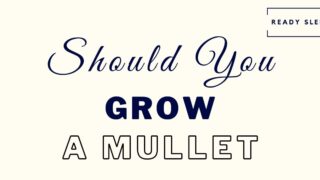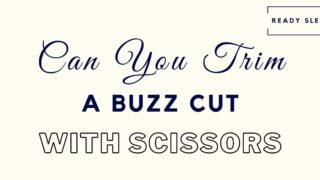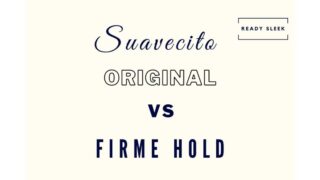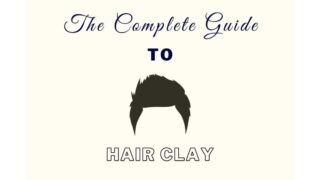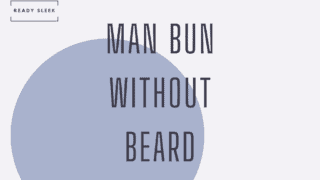Haircut numbers – useful, but confusing. Let’s clear things up. You’re about to learn everything you need to know about the number 5 haircut.
Let’s get to it.
What Does The Number 5 Haircut All Over Look Like?
The number 5 haircut looks like this:
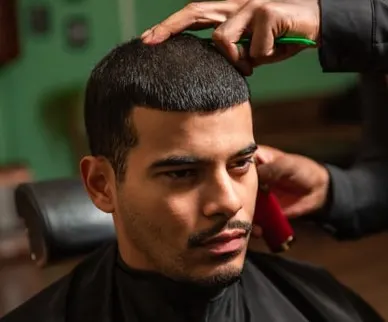
As you can see, it’s short, stylish, and easy to maintain.
The key benefit of the #5 is its subtlety. While it may not seem too far from a #2, #3, or #4, the difference is more significant than you might think.
It’s a great option for men who want it short but not that short.
While clipping everything down to an even #5 length should technically be called a buzz cut, it doesn’t immediately come across as one on first appearances.
It simply looks like a short men’s hairstyle.
The beauty of it is that it’s long enough to minimize the amount of scalp that shows through under strong lighting.
In addition, you’ve usually got just enough hair at the front to partly cover receding temples.
Both of these factors make the #5 haircut a good option for balding men with thinning hair.
Remember, you won’t have any ability to style the hair – there simply isn’t enough length to allow you to do this.
The flatness you’re left with up top can exaggerate the shape of the face as a result. It’s important not to forget this.
Men with round faces, for instance, may find that things look even rounder after trimming a short haircut like the #5.
Those that find this to be an issue may actually benefit from growing some facial hair.
It can make up for the inability to add height at the top of the head by adding structure, fullness, and length at the bottom of the head using a beard.
Other than this (potential) downside, however, the number 5 haircut looks effortlessly tidy, minimalist, and stylish.
What Length Is The Number 5 Haircut?
The number 5 haircut is 16mm long (5/8 of an inch) and is trimmed using the #5 clipper guard.
Some clippers, especially budget ones, won’t come with a #5 clipper guard.
This is important – you may find that a #4 is simply too short but you don’t have the tools to trim down to lengths longer than this.
Ensure that the clipper you go for comes with clipper guards that allow you to trim down to your desired length.
As I mentioned earlier, there isn’t a huge amount you can do with this length – it’s pretty “set it and forget it” as far as styles go.
However, most people won’t go for a #5 haircut all over – it usually won’t grow out in a very attractive way. It’ll have a sort of “fuzzball” appearance that rarely looks good.
Because of this, most men will choose to have the sides and back a shorter length, while keeping the #5 length on top.
For instance, the top could be left at #5 while the sides and back were faded from a #3 into a #4.
I’ll be talking more about the #5 with fades later on.
But you could also have the sides and back a single, short length before sharply transitioning into the #5 length on top – this is more like a “high and tight”.
The #5 length on top works pretty well for high and tights.
The point here is that while you may choose the #5 length as your primary length, choosing shorter lengths at the sides and back (tapered on non-tapered) is often a good way to go.
It’ll just grow out in a better way.
The Number 5 Haircut With A Fade
The number 5 haircut with a fade has the number 5 length (16mm) on top, with the sides and back gradually increasing in length from bottom to top. The seamless blending of the different lengths is what produces the typical faded appearance.
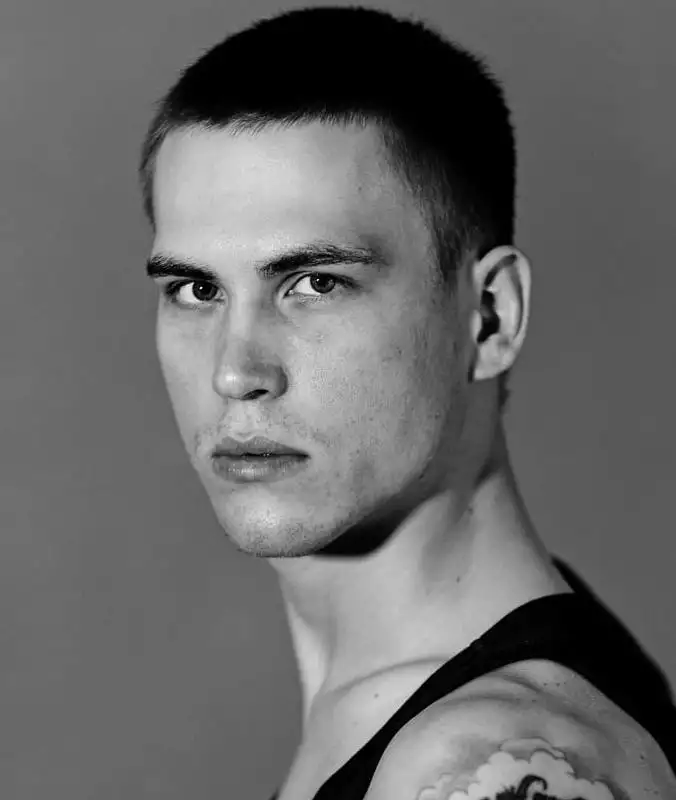
Image From Deposit Photos
Fades are popular and do work well with the #5 length on top.
The reason for this is that the contrast between the shorter lengths of the fade at the sides and back and the longer length on top can be quite striking.
The shorter the sides and back and the higher up the transition point of the fade, the bolder and more in-your-face the fade will look.
Let me explain that in a little more detail.
Fades can be categorized in terms of their transition point. This is that point at the sides where the shortest length of the fade starts to transition and gradually blend into longer lengths.
Number 5 with a low fade – the transition into longer lengths occurs approximately half an inch above the ear.
Number 5 with a high fade – the transition into longer lengths occurs approximately at the level of the temples.
Number 5 with a mid fade – the transition into longer lengths occurs approximately halfway up the sides.
The higher up the transition, the larger the area of the sides and back that is clipped down to the shortest length. As a result, there’s a greater contrast with the #5 length on top and the style is more attention-grabbing.
In addition, the shorter the shortest length of the fade, the more eye-catching it’ll be.
When the shortest length is literally shaved down to skin – i.e a “skin fade” – the contrast with the #5 length on top is greater and the fade will be more obvious as a result.
Longer lengths at the bottom, for example – number 2 fades – are still definitely noticeable. However, as there’s a little less contrast with the #5 length on top, it won’t be quite as attention-grabbing as a skin fade.
Overall, however, the number 5 haircut is a great one to pair with a fade.
The Number 5 Haircut On The Sides
The number 5 haircut on the sides is a style where the sides are clipped down to a number 5 length (16mm) while the top is left longer. The top can be cut or styled in many different ways.
With the “short back and sides” aesthetic being so prevalent in modern hairstyles, you can expect the top to be longer than a #5 length when the #5 is used for the sides and back.
While many men do go for even shorter lengths on the sides and back – for example a #2, 3, or 4 – the #5 is still a reasonable option when the hair on top is pretty long.
Keeping the sides and back noticeably shorter than the top produces a tapered appearance – the face usually looks slimmer and the jawline more defined.
It’s an especially good option for men with rounder faces looking to add some definition and structure to the face.
But if you’re thinking of going for a #5 on the sides, it’s important to bear in mind that a shorter length may be an even better option.
If you find that the hair simply has too much fullness at the sides and you’d prefer a narrower overall appearance to the face, try trimming the sides even shorter.
You can ask the barber to go for a #4 or even a #3 at the sides instead.
Remember, the sides and back also often aren’t a single length. Gradually increasing the length from the bottom to the top is a very common technique – eg. with tapers and fades.
So, you could always gradually increase the length from the bottom of the sides eventually into a #5 length at the top of the sides.
How To Do A Number 5 Haircut
Here’s a quick routine you can use for trimming a number 5 haircut all over DIY.
It isn’t tough, but you do need a clipper that’ll allow you to do it. Most importantly, as you’d expect, you need a clipper that comes with a #5 clipper guard.
Once you’ve got this, all you’ll need is a bathroom mirror and ideally a handheld mirror. The handheld one will just come in extremely handy when you’re trying to trim the back down.
1. Get The Clipper Ready
To prep the clipper, you’ll want to oil it, clean it, and charge it (if it’s cordless).
Charged clippers are more effective and more efficient. They tug and pull less because the motor is capable of keeping the blades running well.
Oiled clippers will also simply cut through the hair more efficiently because lubricated blades create less friction.
Finally, a clean pair of clippers with no hair clogging up the blades will also tug and pull less.
Doing all of this should increase the likelihood of a comfortable trim and a nice and even number 5 haircut.
2. Wash
Clean hair is easier to clip than greasy, oily, weighed-down hair.
So, wash the hair and dry it completely.
Once this is done, the stage is essentially all set for the trim.
3. Trim The Top And Sides To A #5 Length
While you could start with the back if you wanted to, many people leave this until last. This is because it’s usually the toughest part.
Pop on the #5 clipper guard and start trimming the top. When trimming, you’ll want to go against the grain for the quickest and most even cut. This means against the direction of growth.
For the top, this is usually backward. For the sides, this is usually upward.
Trim the sides. Don’t forget the space behind the ears – those hairs can be tricky to catch.
Once you’ve done the first pass over with the clippers, have a look and feel for any patches you may have missed. Go over them again.
Remember, you can always trim the sides and back down a grade or two shorter than the #5 length on top.
Trying to give yourself a fade often ends in poor results, unless you’ve got some skills with a pair of clippers.
But simply trimming the sides and back down to a shorter length isn’t tough to DIY.
However, for the sake of keeping things even simpler, in this tutorial, we’re just trimming everything down to a #5 for a number 5 haircut all over.
4. Trim The Back To A #5 Length
The back is tough to do because it’s tough to see. If you’ve got someone that can do this part for you, take them up on the offer if you trust them.
If you’ve got to DIY it, a handheld mirror will definitely come in useful.
Hold it in one hand and turn around so your back faces the bathroom mirror. You should be able to see the back of your head in the handheld mirror as it reflects off of the bathroom mirror.
The back of the head has ridges that can be tough to glide the clipper over, so go slow.
Again, trim against the general direction of growth and try to get as even a cut as possible.
The crown will often pose a problem because hair spirals and grows in different directions here – it’s called a cowlick.
Feel the area, try to gauge the different directions of growth, and vary the angle of the clipper to trim it as evenly as you can.
Have a look in the handheld mirror again to see if you can spot any patches you’ve missed. Feeling the area often picks up on missed patches you may not have been able to see.
5. Clean Up The Neck
The neckline is the lowest border of your number 5 haircut at the back. It’s where the hair meets the neck and you’ll want it to look tidy.
When the hair is this short, you don’t necessarily need to square off or round off your neckline, although it’ll often look more intentional and neat.
The trouble is, it’s quite tough to do this by yourself. Once again, if you’ve got someone you trust with a pair of clippers to do it for you, this would be better.
But these days, there are tools out there to help you do it.
Neckline shaving templates like this one (
Once you’ve cleaned up the neckline (if you chose to), you’re done.
Wash off any excess hair in the shower and admire your work.
Frequently Asked Questions
Here are some frequently asked questions on the number 5 haircut that people often have trouble with.
Is A Number 5 Haircut 5mm
The number 5 haircut is not 5mm – this is a common misconception. It actually equates to approximately 16mm (5/8 of an inch).
As with other clipper grades, it’s important to never assume that the grade number is the same as the number of millimeters/inches it’ll trim down to.
This confusion is a very frequent cause of disaster when it comes to DIY trims, especially with the shorter clipper guards.
For example, someone could see “3mm” on a clipper guard (a number 1 guard) and think it’ll trim down to a “number 3”.
In reality, they’re giving themselves a #1 without even realizing it.
I’ve talked more about how hair clipper guards work in this article, together with a rundown of what length each clipper grade usually trims down to.
I say “usually”, because clipper grades can, unfortunately, vary by brand. Overall, however, you can expect the more common clipper grades lengths to be pretty universal.
Is A Number 5 Haircut Short
The number 5 haircut is a short hairstyle, but often long enough to allow for partial coverage of the temples and to minimize the amount of scalp that shows through.
As you’ve seen from the photographs earlier in this article, there’s no escaping the fact that the number 5 is on the shorter end of the spectrum.
It’s too short to style in any way, but many men are actually drawn to the simplicity that this brings.
Not being able to do anything with the hair is actually surprisingly liberating. There’s very little you need to do to keep it looking neat and tidy.
In addition, it’s not so short that it would immediately be labeled a buzz cut, even though that’s technically what it would be.
Plus, although the scalp will usually still be visible when the hair is this short (especially in men with thinning hair), it won’t be as visible as it would be with a #2 or #3 haircut, for instance.
Number 4 Vs Number 5 Haircut
The number 4 haircut consists of hair that is trimmed down to 13mm long (1/2 an inch) and trimmed using a #4 clipper guard. In contrast, the number 5 haircut is 16mm long (5/8 of an inch) and trimmed using a #5 clipper guard.
The two lengths are surprisingly difficult to tell apart from each other. The number 4 haircut is more common than a number 5 haircut.
You’re more likely to find a #4 clipper guard with your average pair of clippers than a #5 clipper guard.
But overall, both styles are easy to maintain and keep neat.
Conclusion
There you have it. Everything you could ever want to know about the number 5 haircut.
It may not be the most common length to clip everything down to, but it certainly has its fans thanks to its benefits.
Enjoy.
Ready Sleek founder. Obsessed with casual style and the minimalist approach to building a highly functional wardrobe. Also a fan of classic, vintage hairstyles.

![Number 5 Haircut: Length, Styles, How-To, Fade [Pics]](https://www.readysleek.com/wp-content/uploads/2021/09/number-5-haircut-720x405.jpeg)
